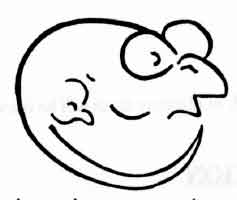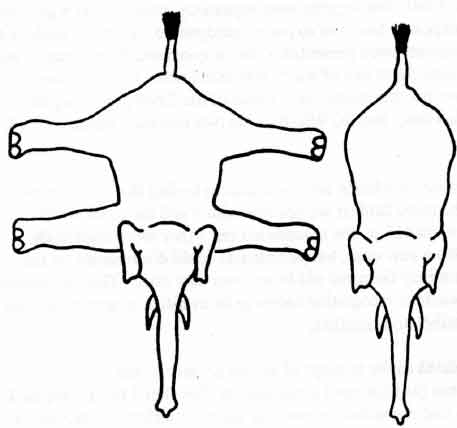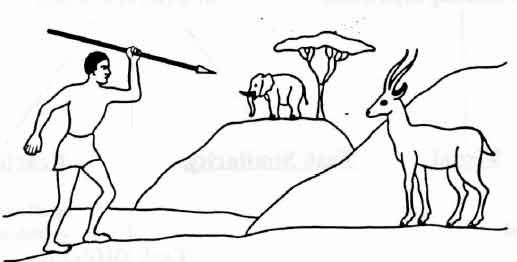Perceptual set in psychology refers to a mental predisposition or readiness to perceive stimuli in a particular way based on previous experiences, expectations, beliefs, and context. It influences how we interpret and make sense of sensory information, shaping our perception and understanding of the world.
Perceptual set theory stresses the idea of perception as an active process involving selection, inference, and interpretation (known as top-down processing).
The concept of perceptual set is important to the active process of perception. Allport (1955) defined perceptual set as:
“A perceptual bias or predisposition or readiness to perceive particular features of a stimulus.”
Perceptual set is a tendency to perceive or notice some aspects of the available sensory data and ignore others. According to Vernon, 1955 perceptual set works in two ways:
- The perceiver has certain expectations and focuses attention on particular aspects of the sensory data: This he calls a Selector”.
- The perceiver knows how to classify, understand and name selected data and what inferences to draw from it. This she calls an “Interpreter”.
It has been found that a number of variables, or factors, influence perceptual set, and set in turn influences perception. The factors include:
• Expectations
• Emotion
• Motivation
• Culture
Expectation and Perceptual Set
(a) Bruner & Minturn (1955) illustrated how expectation could influence set by showing participants an ambiguous figure “13” set in the context of letters or numbers e.g.

The physical stimulus “13” is the same in each case but is perceived differently because of the influence of the context in which it appears. We EXPECT to see a letter in the context of other letters of the alphabet, whereas we EXPECT to see numbers in the context of other numbers.
(b) We may fail to notice printing/writing errors for the same reason. For example:
1. “The Cat Sat on the Map and Licked its Whiskers”.
2.

(a) and (b) are examples of interaction between expectation and past experience.
(c) A study by Bugelski and Alampay (1961) using the “rat-man” ambiguous figure also demonstrated the importance of expectation in inducing set. Participants were shown either a series of animal pictures or neutral pictures prior to exposure to the ambiguous picture. They found participants were significantly more likely to perceive the ambiguous picture as a rat if they had had prior exposure to animal pictures.

Motivation / Emotion and Perceptual Set
Allport (1955) has distinguished 6 types of motivational-emotional influence on perception:
(i) bodily needs (e.g. physiological needs)
(ii) reward and punishment
(iii) emotional connotation
(iv) individual values
(v) personality
(vi) the value of objects.
(a) Sandford (1936) deprived participants of food for varying lengths of time, up to 4 hours, and then showed them ambiguous pictures. Participants were more likely to interpret the pictures as something to do with food if they had been deprived of food for a longer period of time.
Similarly Gilchrist & Nesberg (1952), found participants who had gone without food for the longest periods were more likely to rate pictures of food as brighter. This effect did not occur with non-food pictures.
(b) A more recent study into the effect of emotion on perception was carried out by Kunst- Wilson & Zajonc (1980). Participants were repeatedly presented with geometric figures, but at levels of exposure too brief to permit recognition.
Then, on each of a series of test trials, participants were presented a pair of geometric forms, one of which had previously been presented and one of which was brand new. For each pair, participants had to answer two questions: (a) Which of the 2 had previously been presented? ( A recognition test); and (b) Which of the two was most attractive? (A feeling test).
The hypothesis for this study was based on a well-known finding that the more we are exposed to a stimulus, the more familiar we become with it and the more we like it. Results showed no discrimination on the recognition test – they were completely unable to tell old forms from new ones, but participants could discriminate on the feeling test, as they consistently favored old forms over new ones. Thus information that is unavailable for conscious recognition seems to be available to an unconscious system that is linked to affect and emotion.
Culture and Perceptual Set

Elephant drawing split-view and top-view perspective. The split elephant drawing was generally preferred by African children and adults .
(a) Deregowski (1972) investigated whether pictures are seen and understood in the same way in different cultures. His findings suggest that perceiving perspective in drawings is in fact a specific cultural skill, which is learned rather than automatic. He found people from several cultures prefer drawings which don”t show perspective, but instead are split so as to show both sides of an object at the same time.
In one study he found a fairly consistent preference among African children and adults for split-type drawings over perspective-drawings. Split type drawings show all the important features of an object which could not normally be seen at once from that perspective. Perspective drawings give just one view of an object. Deregowski argued that this split-style representation is universal and is found in European children before they are taught differently.
(b) Hudson (1960) noted difficulties among South African Bantu workers in interpreting depth cues in pictures. Such cues are important because they convey information about the spatial relationships among the objects in pictures. A person using depth cues will extract a different meaning from a picture than a person not using such cues.
Hudson tested pictorial depth perception by showing participants a picture like the one below. A correct interpretation is that the hunter is trying to spear the antelope, which is nearer to him than the elephant. An incorrect interpretation is that the elephant is nearer and about to be speared. The picture contains two depth cues: overlapping objects and known size of objects. Questions were asked in the participants native language such as:
What do you see?
Which is nearer, the antelope or the elephant?
What is the man doing?
The results indicted that both children and adults found it difficult to perceive depth in the pictures.

The cross-cultural studies seem to indicate that history and culture play an important part in how we perceive our environment. Perceptual set is concerned with the active nature of perceptual processes and clearly there may be a difference cross-culturally in the kinds of factors that affect perceptual set and the nature of the effect.
References
Allport, F. H. (1955). Theories of perception and the concept of structure. New York: Wiley.
Bruner, J. S. and Minturn, A.L. (1955). Perceptual identification and perceptual organisation, Journal of General Psychology 53: 21-8.
Bugelski, B. R., & Alampay, D. A., (1961). The role of frequency in developing perceptual sets. Canadian Journal of Psychology, 15, 205-211.
Deregowski, J. B., Muldrow, E. S. & Muldrow, W. F. (1972). Pictorial recognition in a remote Ethiopian population. Perception, 1, 417-425.
Gilchrist, J. C.; Nesberg, Lloyd S. (1952). Need and perceptual change in need-related objects. Journal of Experimental Psychology, Vol 44(6).
Hudson, W. (1960). Pictorial depth perception in sub-cultural groups in Africa. Journal of Social Psychology, 52, 183-208.
Kunst- Wilson, W. R., & Zajonc, R. B. (1980). Affective discrimination of stimuli that cannot be recognised. Science, Vol 207, 557-558.
Necker, L. (1832). LXI. Observations on some remarkable optical phenomena seen in Switzerland; and on an optical phenomenon which occurs on viewing a figure of a crystal or geometrical solid . The London and Edinburgh Philosophical Magazine and Journal of Science, 1 (5), 329-337.
Sanford, R. N. (1936). The effect of abstinence from food upon imaginal processes: a preliminary experiment. Journal of Psychology: Interdisciplinary and Applied, 2, 129-136.
Vernon, M. D. (1955). The functions of schemata in perceiving. Psychological Review, Vol 62(3).
Why people should be skeptical when evaluating the accuracy of their perceptual set?
People should be skeptical when evaluating the accuracy of their perceptual set because it can lead to biased and subjective interpretations of reality. It can limit our ability to consider alternative perspectives or recognize new information that challenges our beliefs. Awareness of our perceptual sets and actively questioning them allows for more open-mindedness, critical thinking, and a more accurate understanding of the world.

